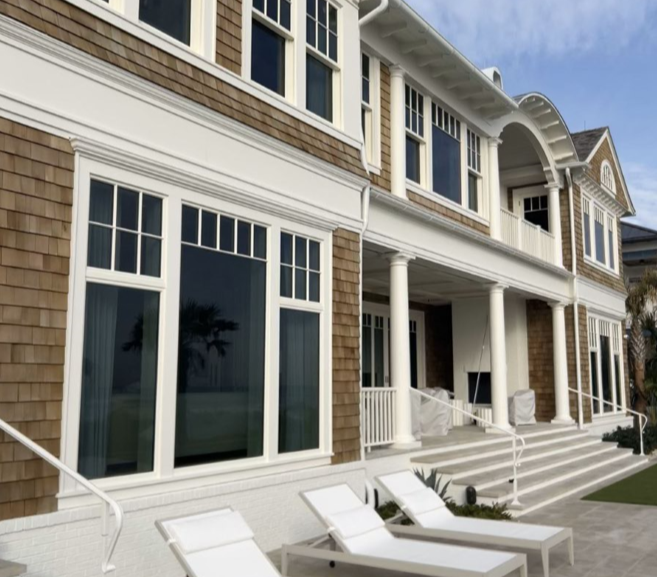Do You Need Help?
Request A Callback!
LocalSite - Callback - Home
Frequently Asked Questions About Our Services
At Quality Touch Painting Inc., we believe that informed clients are happy clients. We understand that you may have questions about our services, the painting process, and how to achieve the best results for your home or business. Our Frequently Asked Questions page is designed to provide you with clear, helpful answers to some of the most common questions we receive. Whether you're planning your first painting project or looking for expert tips, you'll find valuable information here. If you don’t see your question answered, please don’t hesitate to reach out—our friendly team is always ready to assist!
How much does interior painting cost?
The cost of interior painting can vary greatly depending on several factors, including the size and number of rooms, the type and texture of the surfaces, the level of preparation required, and the quality of the paint chosen. Additional factors such as ceiling heights, trim work, wall repairs, and whether furniture needs to be moved can also impact the final price. For spaces that have significant damage or stains, additional surface prep like patching, priming, and sanding may be needed, which affects cost. Higher-quality paints can offer increased washability, richer colors, and greater durability but may carry a higher upfront price.
At Quality Touch Painting Inc., we always offer detailed, customized consultations and transparent quotes so you can make an informed decision based on your specific needs and budget. Our team ensures that every aspect of your project is considered so you receive the best possible finish and value.
How to prepare walls for painting interior?
Proper preparation is key for a great finish. Start by removing wall hangings, moving furniture, and covering floors. Clean the walls to remove dust and grease. Repair any holes or cracks with spackle and sand smooth. Finally, apply painter’s tape to trim, baseboards, and other areas you wish to protect.
Do you caulk before or after painting interior?
Caulking is typically performed before painting the interior. The purpose of caulking is to seal joints, cracks, and gaps around windows, doors, baseboards, and trim. Applying caulk before painting ensures a seamless appearance, prevents drafts, blocks moisture, and creates a clean line for the paint to adhere to. Once you have applied the caulk, it’s important to allow it to dry fully according to the manufacturer’s recommendations before proceeding with any paint application. Taking the extra time with this step will help create a truly professional finish, prevent air and water infiltration, and give your project long-lasting results. If any touch-ups to the caulk are needed, they should be taken care of prior to the final coat of paint.
Does interior painting increase home value?
Yes, a fresh coat of paint can brighten your space, make it feel more inviting, and even increase your home’s value—especially if you use modern, neutral colors that appeal to buyers.
How much does exterior house painting cost?
The cost of exterior painting can vary significantly based on several key factors. These include the size and height of your home, the type and condition of the siding, the number of stories, the amount of surface preparation required, and the complexity of architectural features. Additional considerations include the quality and type of paint selected, any necessary repairs or caulking, and accessibility of the surfaces to be painted. Homes that require extensive preparation, such as scraping, sanding, priming, and repairing damaged wood, may incur higher costs due to the additional labor and materials needed. Unique colors, specialty finishes, or custom details can also affect the overall price.
What temperature is right for exterior painting?
For best results, exterior painting in Jacksonville, Florida should be done when temperatures are between 50°F and 85°F. Avoid painting in extremely hot, cold, or humid conditions, as the local climate can affect the paint’s adhesion and durability.
How to prep a house for exterior painting?
Exterior prep includes power washing to remove dirt and loose paint, scraping and sanding rough areas, repairing damaged surfaces, caulking gaps, and applying primer to bare wood or metal.
How to clean exterior walls before painting?
Cleaning exterior walls before painting is critical for a long-lasting finish. Begin by removing dirt, grime, cobwebs, and mildew. For most surfaces, the most effective method is to use a pressure washer with a mild detergent solution to break up stubborn dirt and stains. Take care not to damage siding or force water behind the panels. If using a garden hose, scrub the surfaces with a soft-bristle brush and soapy water, then rinse thoroughly. Pay special attention to areas under eaves and around doors and windows where grime often accumulates. Allow the surfaces to dry completely before proceeding with repairs, priming, or painting. Proper cleaning not only improves paint adhesion but also helps ensure that the final finish looks clean and vibrant for years to come.
How to prep cabinets for painting?
Proper preparation is essential when painting cabinets to achieve a smooth and durable finish. First, remove all cabinet doors, drawers, and hardware. Label each piece so reassembly is straightforward. Clean all surfaces thoroughly to remove grease, grime, and residues, as kitchen cabinets in particular tend to collect these over time. Use a high-quality degreaser or a mix of warm water and mild detergent for cleaning, then let everything dry completely. Lightly sand all surfaces, including doors, drawer fronts, and frames, to remove any existing gloss and to help the new paint adhere. Wipe down all surfaces with a tack cloth to remove dust. Apply painter’s tape to protect nearby walls, countertops, and appliances. Use a quality primer appropriate for your cabinet material to create a solid base for the paint. These careful prep steps are critical for a professional-looking, long-lasting cabinet makeover.
What paint to use when painting furniture?
Selecting the right paint for furniture depends on the material and the desired finish. For most wood furniture, a high-quality acrylic latex paint provides durability, smoothness, and a wide selection of finishes from matte to high gloss. Specialty paints such as chalk paint or milk paint offer unique finishes and require minimal prep, making them great for achieving vintage or distressed looks. For laminate or previously finished furniture, a bonding primer followed by enamel paint often works best for excellent adhesion and durability. Oil-based paints, while less commonly used today, offer superior hardness for heavy-use pieces but take longer to cure and may have stronger odors. Always top with a clear sealant or polyurethane for added protection, especially for pieces that will see heavy wear.
How to sand furniture for painting?
Sanding furniture before painting is an essential step for achieving a professional, long-lasting result. Start by removing any hardware, drawers, or doors for easier access to all surfaces. Use medium-grit sandpaper (such as 120-grit) to gently sand away any old finish, gloss, or minor imperfections. This step helps to smooth the surface and create a texture that allows new paint or primer to grip securely. For intricate carvings or details, a sanding sponge or angled sanding tool can be helpful. Once the initial sanding is done, wipe away dust with a tack cloth, then sand again with fine-grit sandpaper (such as 220-grit) to ensure the surface is completely smooth and ready for painting. Be sure to remove all sanding dust afterwards. This level of preparation ensures your furniture will take on paint evenly and resist peeling, scratching, or flaking.
How to clean furniture before painting?
Proper cleaning is crucial to ensure your furniture paint job looks attractive and lasts for years. Begin by thoroughly wiping down the entire piece with a mixture of warm water and a mild detergent or degreaser, paying special attention to surfaces that collect hand oils, spills, or dirt. Use a soft cloth or sponge for general cleaning; for sticky residue or stubborn stains, a gentle scrub brush may be required. Make sure to clean every section, including crevices, undersides, and inside drawers. Rinse any soapy residue with a damp cloth and allow the furniture to dry completely. Once dry, eliminate any dust from previous sanding with a tack cloth or microfiber cloth. This comprehensive cleaning makes sure the paint will adhere uniformly, resulting in a flawless finish.
How to prep a deck for painting?
For a deck painting project to stand up to the elements, preparation is everything. Start by removing all furniture, planters, or grills from the deck surface. Sweep away debris, leaves, and dirt. If the deck has existing peeling paint or splinters, scrape or sand these areas to smooth the surface. Carefully inspect the deck for loose boards, nail pops, or damage, and make necessary repairs to ensure structural soundness. Power wash or scrub the surface by hand using a deck cleaner specifically designed to remove mold, algae, and grime. Allow ample time for the deck to dry thoroughly, as water trapped beneath paint can cause peeling or wood decay. Once clean and dry, use painter’s tape and plastic sheeting to protect nearby siding, railings, and landscaping, ensuring a crisp paint job free of splatters and mess.
How to clean deck before painting?
A clean surface is critical for paint to adhere and perform. Sweep your deck to remove loose dirt, dust, and debris. Use a commercial deck cleaner or a solution of water and mild detergent to scrub away built-up grime, moss, mold, or mildew. For best results, use a stiff-bristle brush to work the cleaner into the wood grain—this lifts away stubborn residues that simple rinsing cannot remove. For particularly dirty or weathered decks, a pressure washer may be used, but be careful to use a low pressure setting to avoid gouging or damaging the wood. Thoroughly rinse the entire deck with clean water and allow it to dry completely before starting any painting or staining process. Skipping this vital cleaning step can prevent the paint or stain from soaking into the wood, leading to faster wear and peeling over time.
How long should a deck dry before painting?
After thorough cleaning and rinsing, your deck must dry completely before applying any paint or stain. Generally, you should allow your deck to dry for at least 24 to 48 hours, depending on weather conditions. High humidity, cool temperatures, or lack of direct sunlight may extend drying times, while warm, sunny, and breezy weather may allow for faster drying. It is crucial not to rush this step, as moisture trapped in the wood can prevent paint from adhering and may lead to blistering, peeling, or even mildew growth underneath the surface. For best results, check that the wood feels dry to the touch and use a moisture meter if you want to be absolutely sure. Proper dry time ensures a smoother, longer-lasting finish.

Ready to Transform Your Space with Exceptional Quality?
Discover the difference that true craftsmanship and attention to detail can make! Whether you’re updating a single room, refreshing your home’s exterior, or planning a complete renovation, Quality Touch Painting Inc. is here to help. Our experienced, client-focused team serves Jacksonville and the surrounding areas with a dedication to superior results and outstanding customer care.
